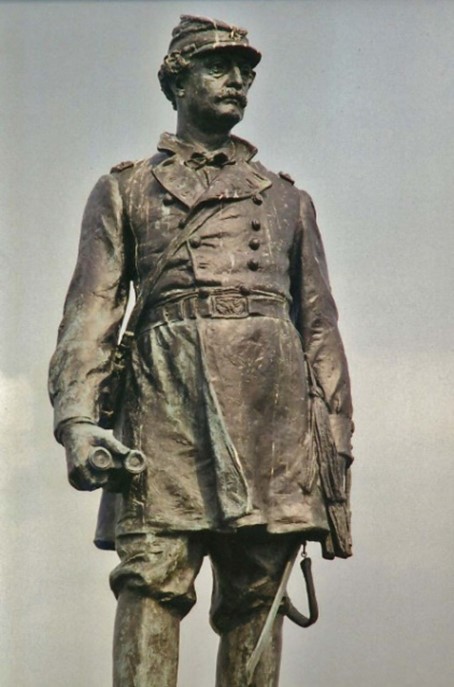The Forgotten General at Gettysburg
Alan’s TTIM Stories #23
Since the European invasion of North America, the inhumanity of slavery would forever stain the history of a nation. Years of political conflict led to an armed engagement with an Army captain from New York who fired the first shot in response to the bombardment of Fort Sumter in April of 1861.
The Captain became a General during the Civil War. A graduate from the U.S. Military Academy in 1842, he fought in the Third Seminole War. He was wounded while leading troops at Antietam.
General Robert E. Lee moved the Army of Northern Virginia into the North in July 1863. The move threatened Harrisburg, and possibly Washington D.C. After the Union disaster at Chancellorsville, a demoralized Army of the Potomac chased Lee’s Army into Pennsylvania. The sleepy college town of Gettysburg is a crossroads for the region. Not chosen by either side as a suitable battlefield, contact was inevitable.
The Union’s First Corps arrived to find the Cavalry engaged. First Corps commander, General John Reynolds, rode to the front to position his soldiers. A Confederate sharpshooter put a bullet into the back of the General’s head – a fatal wound.
Our hero took command. A misstep at his point could turn the results of the battle, and possibly the war. The situation needed a careful and wise assessment. He placed troops to hold back the Rebels until the rest of the Army of the Potomac arrived.
The 11th Corps arrived next. The commanding general, O.O. Howard, outranked our hero and took leadership of the troops engaged. With the nickname, “Old Prayer Book,” many felt his religious zeal more prominent than his military abilities.
The First Corps along with the Calvary successfully delayed the Rebels coming from the west using legendary outfits like the Iron Bridgae and Pennsylvania’s Bucktails. Howard’s troops moved to stop the Confederate advance from the north. Periods of indecision and poorly placed brigades allowed the Rebels to break the lines, sending the 11th Corps in a panicked dash through the town. With the right flank crumbling, our hero led a successful retreat to a defensible position south of town on Cemetery Hill.
Howard, being the commander on the field and eager to divert the blame, incorrectly reported that the First Corps line broke. General George Meade, overall commander of the Army of the Potomac, thought our hero a “deliberate plodder” from the Battle of South Mountain. He quickly accepted Howard’s assessment of the day’s action. Meade replaced our hero with General Newton from the Sixth Corps. Perception and deception instead of reality damaged the military career of our hero. When the heroes of Gettysburg are listed, our hero is forgotten.
He slogged through the Everglades wilderness in the Seminole War after an elusive enemy, witnessed the beginning of the Civil War, positioned the Union Army for eventual victory at Gettysburg – our hero will be best remembered for an activity in Elihu Phinney’s cow pasture in Cooperstown, New York, in 1839. Along with the famous myths in American history such as Betsy Ross and the flag, George Washington and the cherry tree, General Abner Doubleday will be forever connected with the creation of baseball.
Denied recognition for actual heroics; given recognition for a questionable historic connection.
___________________________

Sources:
Gettysburg, by Stephen W. Sears
Wikipedia
Follow announcements of Alan’s TTIM Stories
on Facebook.com/alan.vandervoort or Treads
at vandervoort_author. All stories are found at
www.alanvandervoort.com. Novels by the author
include: Sandhills – A Novel and Key Largo Summer
are found at Booklocker.com and other online booksellers.
___________________________________
Photo credit: Creative Commons Attribution-Share
Alike 3.0 Unported license
Attribution: Carptrash at English Wikipedia
Leave a Reply